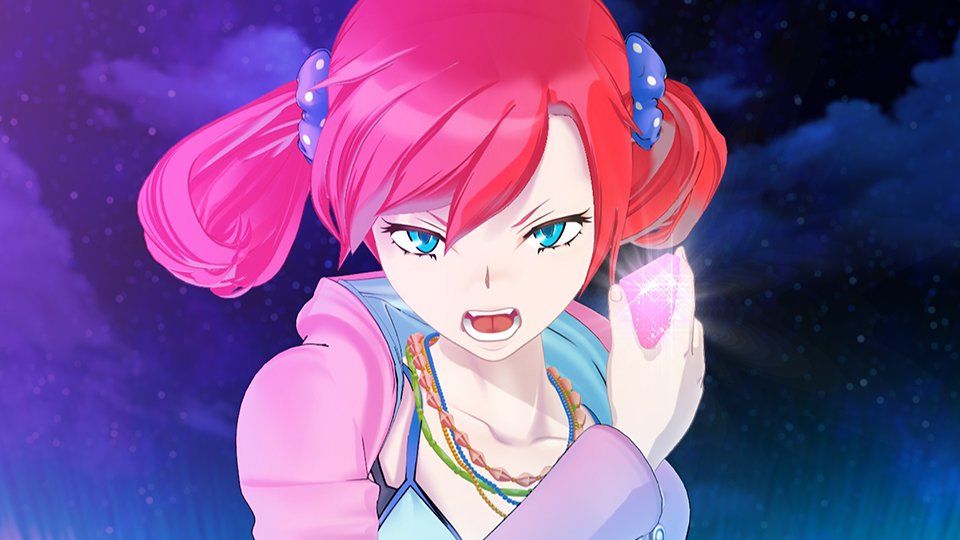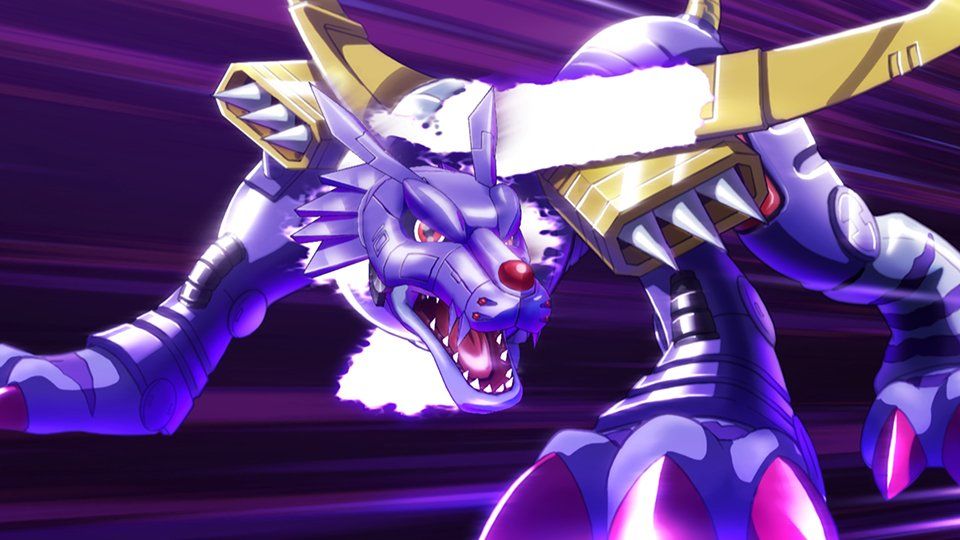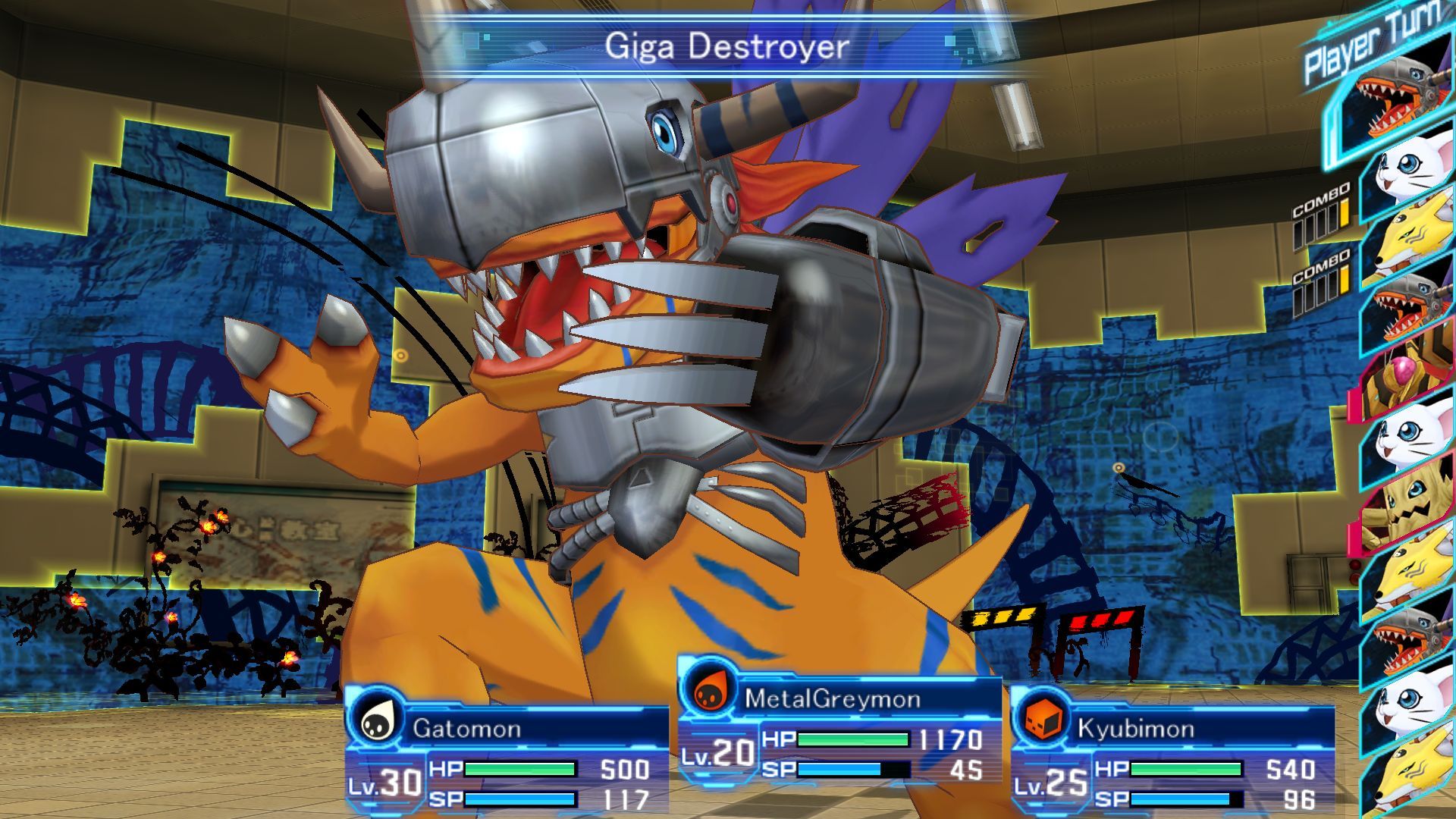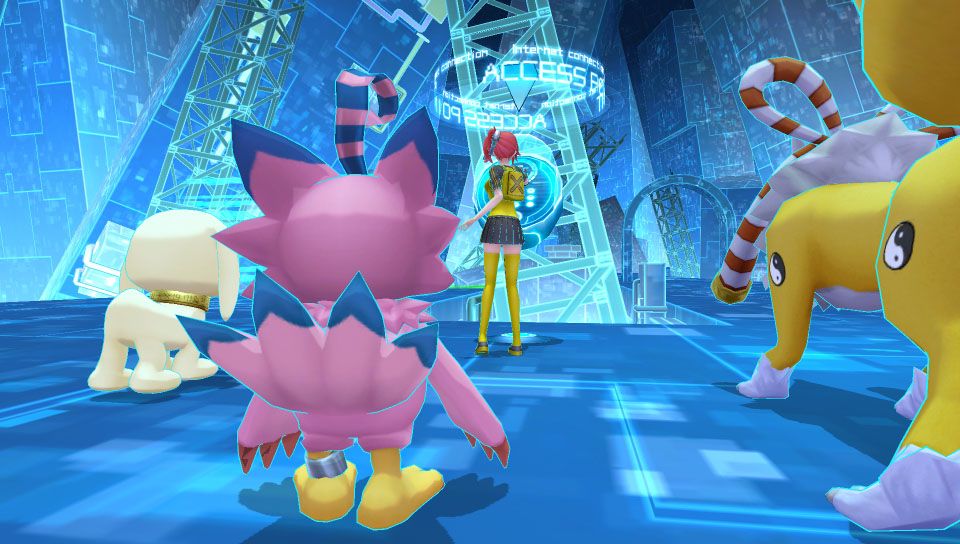A day before the interview with Digimon Story: Cyber Sleuth producer Kazumasa Habu, the nondescript white kiosk displaying the very same title called out to me and I gleefully answered its Tsiren song.
The sneak preview provided by Bandai Namco at their own New York Comic Con booth was fun but disappointingly short and lacking a significant challenge.
My trial playthrough put me in the shoes of the male protagonist (the full game allows players to choose a female protagonist instead) as he explores a basic dungeon with Guilmon, Ikkakumon and ToyAgumon while beating up on Baby and In-training level Digimon through random encounters.
The dungeon design is pretty slick, with eye-popping and crisp blues as well as a decor that screams digital area. The hero moves pretty simply and the camera is fixed and uncontrollable.
This may sound like an issue but everything is always in full view with zero awkward movements, although the precise control sacrifices fluidity and flexibility in movement -- a strange trade-off until you adjust to it properly.
Battles themselves are the standard turn-based fair you'd expect from any JRPG series or Digimon title in general, although the graphics in this game are by far the best looking in any Digimon game hands-down.
You have a party of three Digimon and can choose from Attack or Skills for going on the offense and from other options such as Items, Guard, Change and Escape when the situation calls for a different solution.
An Attack is a basic physical strike that targets a single enemy, while Skill lets a Digimon use their trademark special attacks such as Guilmon's Rock Breaker or Ikkakumon's Harpoon Torpedo. These skills usually have an elemental attribute that is either strong, weak or neutral to a foe.
Items, Escape and Guard is self-explanatory; Change allows the player to switch Digimon between the active and reserve party.
Outside of battles you can access the main menu and a number of other features in the game. There's the "Prayer" menu that allows for players to look up general stats on your protagonist, their hacking ability, case(s) currently open and tutorials.
There's also a menu section that lets you change a Digimon's name, skillset and equipment. You can also see the current and max level of your Digimon. The higher its evolution state, the higher the level cap is, which encourages you to evolve your partner. It seems that, unlike the anime, evolution is permanent.
Then there's the DigiLine, a feature in which the hero receives a variety of messages from both humans and Digimon. The Line is separated into subsections: DigiFarm, Friends and Other.
The first subsection deals with the DigiFarm that the protagonist must nurture and development, with correspondence relating to its growth and inhabitants.
Friends is the category reserved for messages between friends and acquaintances while Other is for miscellaneous messages. The main character can even reply back to some of the messages, such as encouraging a Digimon to make friends in the DigiFarm.
Finally, there's a safe area where humans staying in the Digital World can co-habitat peacefully. This essentially functions as a safe hub world for the hero, in which you can converse with other people and gather information.
Although I generally enjoyed what I was able to play, I honestly felt the demo was far too short to really experience much of the game. The one dungeon available to players couldn't be completely explored, enemy encounters were incredibly easy and I wasn't able to try out all the games features.
At the very least, the addition of a boss battle would have created an air of excitement and tension, as well as give players a chance to really test out the battle system's mettle.
As much as I look forward to Digimon Story: Cyber Sleuth's release this February, the extremely limited playtime I had at NYCC 2015 doesn't paint a thorough picture of what to expect.




